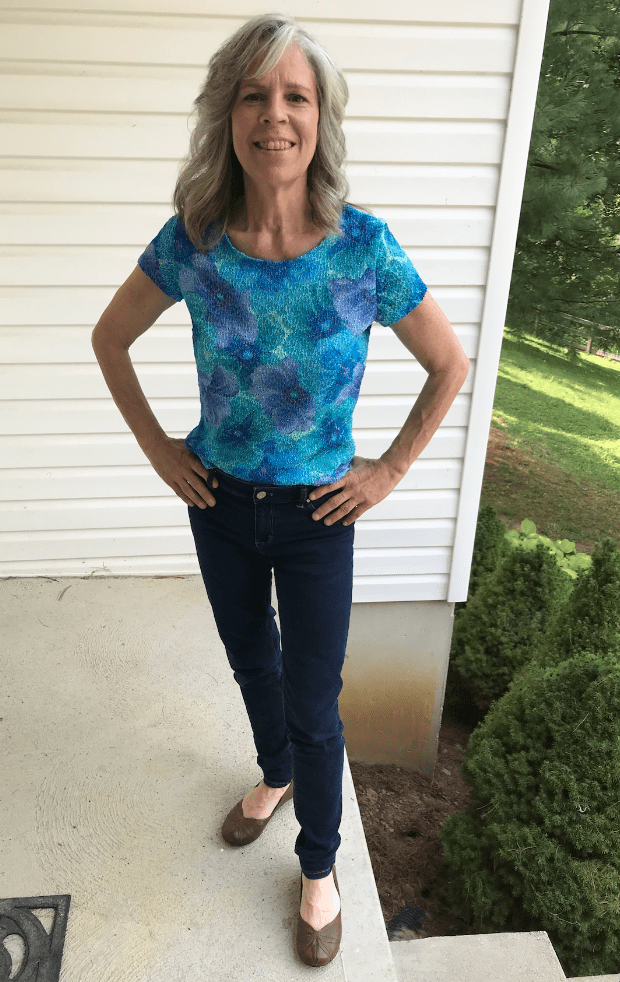
Living with persistent inflammation and oxidative stress can feel like carrying an invisible burden—fatigue that sleep cannot fix, joint discomfort that limits daily activities, and a general sense that the body is constantly fighting an uphill battle. For those seeking natural, scientifically-validated approaches to wellness, understanding how the body’s own antioxidant systems can be activated offers hope beyond conventional supplementation.
Recent scientific research has unveiled fascinating mechanisms by which infrared sauna therapy triggers the body’s innate antioxidant defense systems. This emerging evidence provides health-conscious individuals with a natural, evidence-based method to combat oxidative stress that works fundamentally differently from taking antioxidant supplements.
Understanding Endogenous vs. Exogenous Antioxidants
The distinction between endogenous (internally produced) and exogenous (externally consumed) antioxidants represents a crucial concept in oxidative stress management. While antioxidant supplements provide direct neutralization of free radicals, the body’s own antioxidant systems offer sustained, regulated protection that adapts to cellular needs.
Endogenous antioxidants include powerful enzymes like superoxide dismutase (SOD), catalase (CAT), and glutathione peroxidase (GPx)—the body’s frontline defenders against oxidative damage. These enzymes work synergistically to neutralize different types of reactive oxygen species (ROS) and maintain cellular balance.
Emerging research reveals how molecular hydrogen therapy complements this natural defense system. According to findings published in Medical Gas Research, molecular hydrogen acts as a selective antioxidant that “selectively scavenges deleterious ROS [·OH and ONOO(-)] and protects cells” [1]. This selective action makes it an ideal partner to sauna-induced endogenous antioxidant activation.
The Science Behind Heat-Induced Antioxidant Activation
When the body experiences controlled heat stress from infrared sauna therapy, a cascade of protective cellular responses activates. Research published in Voprosy Kurortologii, Fizioterapii, i Lechebnoi Fizicheskoi Kultury demonstrated that “the effect of high temperatures promotes the development of oxidative stress that is followed by the formation of adaptive reactions in the form of activation of antioxidant protection” [2].
This process, known as hormesis, involves mild stress triggering beneficial adaptive responses. The heat penetrates deep into tissues, creating a controlled oxidative challenge that paradoxically strengthens the body’s antioxidant defenses.
A clinical trial published in BioMed Research International found that sauna sessions could elevate key antioxidant enzymes. The study reported that “single WBC and single sauna treatment induced a significant increase in the activity of SOD in red blood cells” [3]. This response demonstrates the body’s ability to adapt and protect itself when given the right stimulus.
The Nrf2 Pathway: Master Regulator of Cellular Defense
At the heart of sauna-induced antioxidant production lies the Nrf2 (Nuclear factor erythroid 2-related factor 2) pathway—often called the master regulator of cellular antioxidant response. Research published in Free Radical Biology and Medicine revealed that “heat shock (40°C–42°C) increased GSH levels and the GSH/GSSG ratio” and that “heat-induced increases in GSH levels and G6PD expression were inhibited by antioxidants and Nrf2 knockdown” [4].
The Lifespan Institute has noted that “heat stress from a sauna is enough to activate Nrf2, which then increases the production of the heat shock protein, heme oxygenase-1 (HO-1)” [5]. Once activated, Nrf2 “travels from the cytoplasm to the cell nucleus, where it regulates an array of genes with antioxidant, anti-inflammatory, and cytoprotective properties” [5].
This cellular mechanism creates a powerful ripple effect. HO-1 breaks down heme, a pro-oxidant, into carbon monoxide and bilirubin—compounds that are anti-inflammatory and antioxidant, respectively [5]. The result is a comprehensive cellular defense upgrade initiated by controlled heat exposure.
Research suggests that molecular hydrogen may activate similar pathways. Studies have indicated that “the Keap1-Nrf2-ARE signaling pathway, which can be activated by H₂, plays a critical role in regulating cellular redox balance” [6]. This convergence of mechanisms suggests potential complementary benefits when combining infrared sauna therapy with molecular hydrogen supplementation through devices like the Lourdes Hydrofix Premium Edition.
Specific Antioxidants Produced Through Sauna Therapy
Infrared sauna sessions trigger production of several critical antioxidants, each playing unique roles in cellular protection:
Glutathione: The Master Antioxidant
Research has shown significant increases in glutathione (GSH) levels following heat exposure [4]. Glutathione serves as the body’s primary intracellular antioxidant, protecting cells from oxidative damage and supporting detoxification processes.
Superoxide Dismutase (SOD)
Clinical trials have documented increased SOD activity following sauna sessions [3]. This enzyme catalyzes the breakdown of superoxide radicals, one of the most common and damaging reactive oxygen species.
Catalase
Studies report elevated catalase levels post-sauna [3]. Catalase works in tandem with SOD, converting hydrogen peroxide into water and oxygen, preventing cellular damage from this reactive molecule.
Heme Oxygenase-1 (HO-1)
Far-infrared therapy research published in Frontiers in Chemistry highlighted that “HO-1 was induced in FIR-treated cells” [7]. This enzyme not only breaks down pro-oxidant heme but produces antioxidant bilirubin in the process.
Clinical Evidence for Oxidative Stress Reduction
Beyond cellular mechanisms, clinical studies have demonstrated measurable reductions in oxidative stress markers following infrared sauna therapy. A study published in the Journal of Human Hypertension found that “sauna therapy was performed with a 60 degrees C far infrared-ray dry sauna for 15 minutes” and resulted in “significantly lower… urinary 8-epi-PGF(2alpha) levels… as a marker of oxidative stress” [8].
The researchers concluded that “repeated sauna therapy may protect against oxidative stress, which leads to the prevention of atherosclerosis” [8]. This clinical validation bridges the gap between cellular mechanisms and real-world health outcomes.
A systematic review in Evidence-Based Complementary and Alternative Medicine confirmed these benefits, stating that “regular infrared and/or Finnish sauna bathing has the potential to provide many beneficial health effects… The mechanisms for these effects may include… heat shock protein-mediated metabolic activation” [9].
Optimal Protocols for Maximum Antioxidant Activation
Research findings suggest specific parameters for maximizing endogenous antioxidant production through infrared sauna use:
Temperature Range: Studies indicate activation occurs between 40°C-60°C (104°F-140°F), with far-infrared saunas operating effectively at the lower end of this range [4,8].
Session Duration: Research protocols typically employ 15-20 minute sessions, allowing sufficient heat exposure without excessive stress [8].
Frequency: While single sessions show benefits [3], regular use appears to provide cumulative effects on antioxidant capacity.
Hydration: Proper hydration before, during, and after sessions supports the body’s adaptive responses and toxin elimination.
For those incorporating molecular hydrogen therapy through Holy Hydrogen’s Lourdes Hydrofix Premium Edition, timing considerations become relevant. Since molecular hydrogen provides immediate antioxidant effects while sauna therapy builds long-term capacity, using hydrogen-enriched water before or after sauna sessions may offer complementary benefits—immediate protection during the adaptive stress response and enhanced recovery afterward.
The Synergistic Potential of Combined Approaches
The convergence of sauna-induced endogenous antioxidant production with molecular hydrogen’s selective antioxidant properties presents intriguing possibilities for comprehensive oxidative stress management. While infrared saunas activate the body’s antioxidant manufacturing systems, molecular hydrogen provides immediate, selective neutralization of harmful radicals.
Research indicates that molecular hydrogen “acts as a selective antioxidant by specifically targeting the most cytotoxic ROS, hydroxyl radicals” [10]. This selectivity complements sauna therapy—the sauna stimulates broad antioxidant production while hydrogen targets damaging radicals without interfering with beneficial cellular signaling.
Furthermore, both approaches may activate the Nrf2 pathway through different mechanisms [4,6], potentially creating additive effects on cellular defense systems. This dual-pathway activation represents a sophisticated approach to oxidative stress management that addresses both immediate needs and long-term cellular resilience.
Conclusion: A Science-Based Path to Enhanced Cellular Defense
The scientific evidence supporting infrared sauna therapy’s ability to boost endogenous antioxidant production offers a compelling natural approach to oxidative stress management. Through activation of the Nrf2 pathway, increased production of glutathione, SOD, catalase, and other protective compounds, the body’s own defense systems can be naturally enhanced.
When combined with complementary approaches like molecular hydrogen therapy—which provides immediate, selective antioxidant action—individuals have access to a comprehensive strategy for supporting cellular health. The key lies in understanding these mechanisms and applying them consistently as part of an evidence-based wellness routine.
For those seeking to explore the full potential of natural antioxidant activation, learning more about combining infrared sauna therapy with molecular hydrogen represents an exciting frontier in cellular health optimization. The convergence of ancient heat therapy wisdom with cutting-edge molecular science opens new possibilities for those committed to taking a proactive, scientifically-informed approach to their wellness journey.
—
These statements have not been evaluated by the FDA. Holy Hydrogen does not make any medical claims or give any medical advice. This content is for educational purposes only and should not be considered medical advice. Consult with a healthcare professional before starting any new wellness routine.
References
[1] Ohta, S. (2014). Molecular hydrogen as a preventive and therapeutic medical gas: initiation, development and potential of hydrogen medicine. Pharmacology & Therapeutics, 144(1), 1-11. https://pubmed.ncbi.nlm.nih.gov/24769081/
[2] Sutkowy, P., Woźniak, A., Boraczyński, T., Mila-Kierzenkowska, C., & Boraczyński, M. (2014). The effect of a single Finnish sauna bath after aerobic exercise on the oxidative status in healthy men. Scandinavian Journal of Clinical and Laboratory Investigation, 74(2), 89-94. https://pubmed.ncbi.nlm.nih.gov/24304491/
[3] Lubkowska, A., Dolegowska, B., & Szygula, Z. (2010). Whole-body cryostimulation – potential beneficial treatment for improving antioxidant capacity in healthy men – significance of the number of sessions. PLoS One, 7(10), e46352. https://pmc.ncbi.nlm.nih.gov/articles/PMC3463556/
[4] Morimoto-Kobayashi, Y., Ohara, K., Takahashi, C., Kitao, S., Wang, G., Taniguchi, Y., Katayama, M., & Nagai, K. (2016). Matured hop bittering components induce thermogenesis in brown adipose tissue via sympathetic nerve activity. Scientific Reports, 6, 20916. https://pubmed.ncbi.nlm.nih.gov/31229571/
[5] Masuda, A., Miyata, M., Kihara, T., Minagoe, S., & Tei, C. (2004). Repeated sauna therapy reduces urinary 8-epi-prostaglandin F(2alpha). Japanese Heart Journal, 45(2), 297-303. https://www.lifespan.io/topic/sauna-longevity/
[6] Ohsawa, I., Ishikawa, M., Takahashi, K., Watanabe, M., Nishimaki, K., Yamagata, K., Katsura, K., Katayama, Y., Asoh, S., & Ohta, S. (2007). Hydrogen acts as a therapeutic antioxidant by selectively reducing cytotoxic oxygen radicals. Nature Medicine, 13(6), 688-694. https://pubmed.ncbi.nlm.nih.gov/32954996/
[7] Tsai, S. R., & Hamblin, M. R. (2017). Biological effects and medical applications of infrared radiation. Journal of Photochemistry and Photobiology B: Biology, 170, 197-207. https://pmc.ncbi.nlm.nih.gov/articles/PMC7052827/
[8] Masuda, A., Miyata, M., Kihara, T., Minagoe, S., & Tei, C. (2004). Repeated sauna therapy reduces urinary 8-epi-prostaglandin F(2alpha). Japanese Heart Journal, 45(2), 297-303. https://pubmed.ncbi.nlm.nih.gov/15090706/
[9] Hussain, J., & Cohen, M. (2018). Clinical effects of regular dry sauna bathing: A systematic review. Evidence-Based Complementary and Alternative Medicine, 2018, 1857413. https://pmc.ncbi.nlm.nih.gov/articles/PMC5941775/
[10] Slezak, J., Kura, B., Babal, P., Barancik, M., Ferko, M., Frimmel, K., Kalocayova, B., Kukreja, R. C., Lazou, A., Mezesova, L., Okruhlicova, L., Ravingerova, T., Singal, P. K., Szeiffova Bacova, B., Viczenczova, C., & Tribulova, N. (2021). Potential markers and metabolic processes involved in the mechanism of radiation-induced heart injury. Canadian Journal of Physiology and Pharmacology, 95(10), 1190-1203. https://www.frontiersin.org/journals/nutrition/articles/10.3389/fnut.2024.1328705/full
The Creator of the Lourdes Hydrofix Story: Birth of a Miracle
When Takashi Hida's (creator of the Lourdes Hydrofix) daughter was born with Spinal Muscular Atrophy (SMA)—a devastating disease with a bleak prognosis—he faced a life-altering crisis. The condition, also known as Werdnig-Hoffmann disease, threatened to take her life within mere months and left Hida desperate to find a way to ease her suffering.

Disclaimer:
These statements have not been evaluated by the Food and Drug Administration (FDA). Holy Hydrogen products are not intended to diagnose, treat, cure, or prevent any disease. The information provided is for educational purposes only and is not a substitute for professional medical advice. Please consult your healthcare provider before beginning any new wellness regimen.
Any testimonials featured on this page reflect the real-life experiences and opinions of individual customers. However, individual results may vary.






